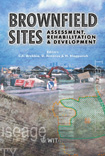Understanding The Outcomes Of Brownfield Clean-up Programs
Price
Free (open access)
Transaction
Volume
55
Pages
Published
2002
Size
543 kb
Paper DOI
10.2495/BF020541
Copyright
WIT Press
Author(s)
R. A. Simons, K. Winson-Geideman & J. Pendergrass
Abstract
This study provides preliminary evidence regarding the clean up and development of previously contaminated properties in the Chicago area that have completed the State of Illinois Pre-Notice Site Cleanup Program (1989 through 1995) and Site Remediation Program (1995 to present). The program offers differing levels of liability relief and allows caps and other on-site remediation strategies. Real estate and environmental databases are merged to allow analysis of development outcomes for a large sample of entering sites, which are followed through the program and into the marketplace. 1 Introduction The concept of brownfield redevelopment by volunteers is relatively new, having evolved over the past decade. The United States Environmental Protection Agency (USEPA) originally served as the government agency responsible for supervising the clean up of contaminated sites through the superfund program, created in 1980. This was a mandatory participation approach for the parties responsible for the pollution. In the 198Os, states began creating their own superfund programs in an effort to clean up sites that the federal EPA would not reach because it focuses only on sites with the most debilitating contamination. The states, in turn, established guidelines for mandatory cleanup, hoping to restore these sites to productive use. In general, contaminated sites, (including brownfields) were subject to the strict liability standards of the Comprehensive Environmental Response, Compensation and Liability Act (CERCLA or Superfund) of 1980 and its state equivalents (Environmental Law Institute [l]). These mandatory programs, however, failed to provide much incentive for participation. Liability was a concern for both developers and lenders. In recent
Keywords




